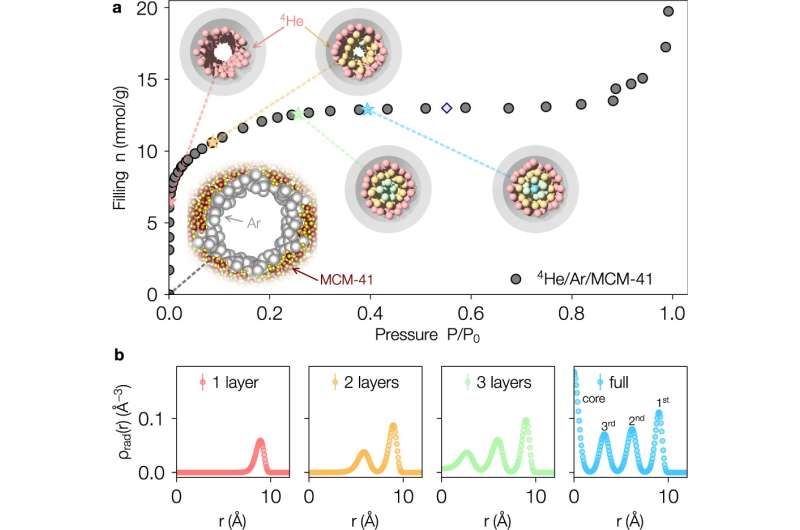
Physicists at Indiana University
and the University of Tennessee have cracked the code to making microchips
smaller, and the key is helium.
Microchips are everywhere, running computers and cars, and even helping people find lost pets. As microchips grow smaller, faster and capable of doing more things, the wires that conduct electricity to them must follow suit. But there's a physical limit to how small they can become—unless they are designed differently.
"In a traditional system, as you put more transistors on, the wires get smaller," said Paul Sokol, a professor in the IU Bloomington College of Arts and Sciences' Department of Physics. "But under newly designed systems, it's like confining the electrons in a one-dimensional tube, and that behavior is quite different from a regular wire."
To study the behavior of particles under these circumstances, Sokol collaborated with a physics professor at the University of Tennessee, Adrian Del Maestro, to create a model system of electronics packed into a one-dimensional tube.
Their findings were recently published in Nature Communications.
The pair used helium to create a model system for their study because its interactions with electrons are well known, and it can be made extremely pure, Sokol said. However, there were issues with using helium in a one-dimensional space, the first being that no one had ever done it before.
"Think of it like an auditorium," Sokol said. "People can move around in lots of different ways. But in a long, narrow hall, nobody can move past anyone else, so that behavior becomes different. We're exploring that behavior where everyone is confined in a row. The big advantage of using a helium model is that we can go from having very few people in the hall to having it packed. We can explore the entire range of physics with this system, which no other system lets us do."
Creating a one-dimensional helium model system posed many other challenges for the researchers as well. If they tried to make a tube small enough to hold the helium, for example, it was too difficult to make measurements.
It was also impossible to use techniques like neutron scattering, a powerful method involving the use of a reactor or accelerator that generates a beam of neutrons to glean detailed information about particle behavior in a one-dimensional system.
On the other hand, they could make very long tubes using specialized glasses grown around templated molecules, but the holes weren't big enough to confine the helium to one dimension.
"You literally need to make a pipe that is only a few atoms wide," Del Maestro said. "No normal liquid would ever flow through such a narrow pipe, as friction would prevent it."
To solve this challenge, the team nano-engineered a material by taking glasses that have one-dimensional channels and plating them with argon to coat the surface and make a smaller channel. They could then make samples that would hold a lot of helium and support the use of techniques like neutron scattering to get detailed information on the system.
With the experimental realization of one-dimensional helium, Del Maestro and Sokol have opened an important new avenue for this research.
Next, the team plans to use this new model system to study helium at high densities—comparable to electrons in a thin wire—and low densities—comparable to one-dimensional arrays of atoms used in quantum information science.
They also plan to develop other nanoengineered materials, such as cesium-coated pores where the helium does not wet the cesium surface. This would further reduce the interactions of the confined helium with the outside world and provide a more ideal system for challenging new theories.

 Previous page
Previous page Back to top
Back to top







